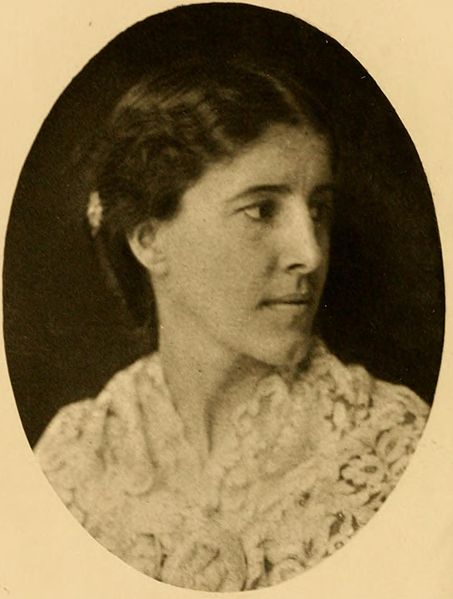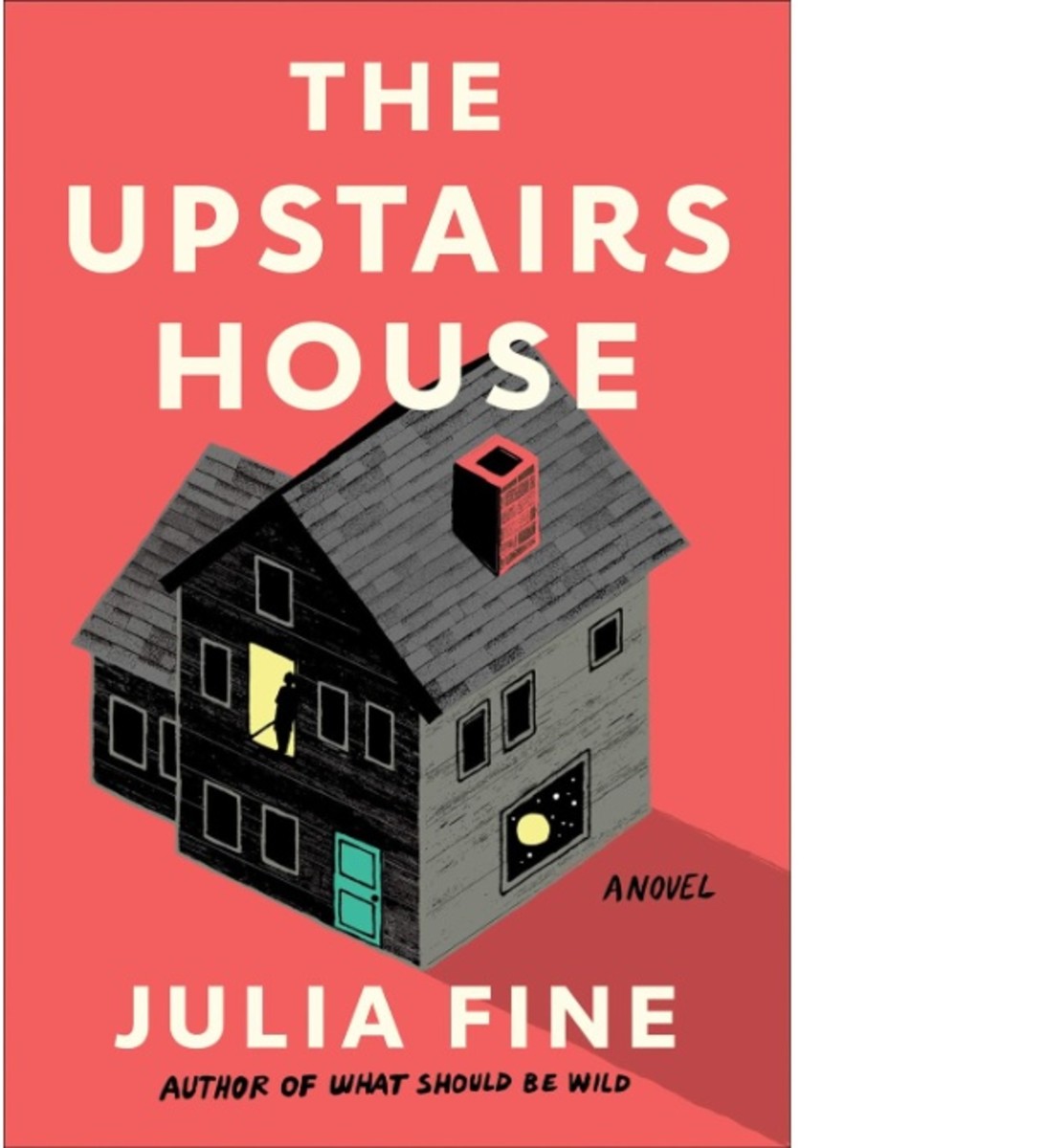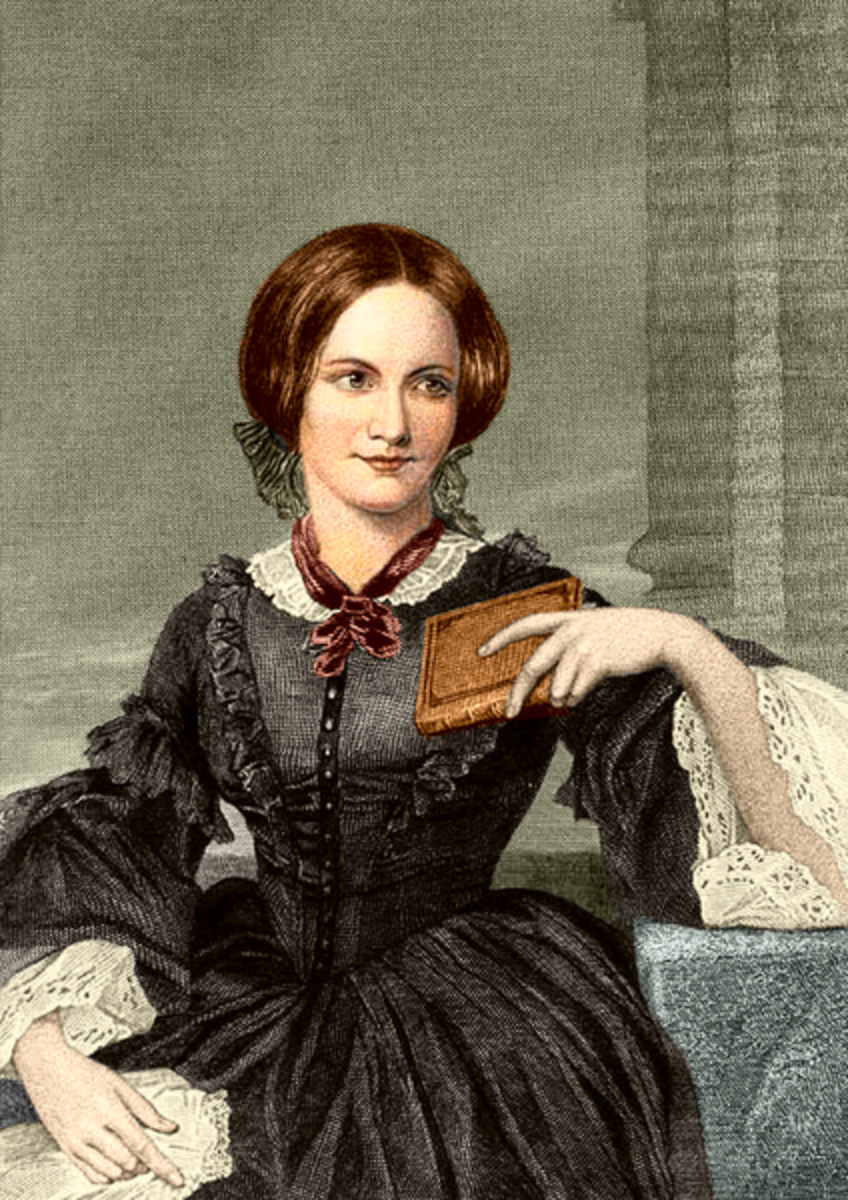The Yellow Wallpaper: Critical Considerations
Charlotte Perkins Gilman (1898)

“The Yellow Wallpaper” by Charlotte Perkins Gilman is a short story from the Victorian period featuring a protagonist who exemplifies a mental disorder labelled as “hysteria,” a term widely used during the period to describe a generic female illness. Jane’s gradual mental degeneration to the point of hallucination and exceedingly abnormal behaviour can be interpreted as the extreme manifestation of societal expectations, as outlined by Susan Bordo in her text Unbearable Weight: Feminism, Western Culture, and the Body. Jane is forced into a regimented and repetitive lifestyle by her husband and doctor, John, which then translates into an obsessive and repetitive relationship with the wallpaper in her bedroom. The worsening of Jane’s condition to such an extreme is the same form of subconscious protest that Bordo suggests women express under the constant bombardment of societal expectations. For example, Bordo suggests that agoraphobia is the response some women have to the socially constructed feminine ideal of domesticity (174-5). Focus will be exerted on how John takes physical control over Jane’s body in an attempt to treat her illness, but inadvertently drives her into deep psychosis as she reacts to the limitations imposed on her physical and mental activity.
The beginning of “The Yellow Wallpaper” offers a brief description of John. He is outlined as strictly empirical and objective; someone who is uncomfortable trying to comprehend anything that can not be perceived physically with the five senses. After this description, Jane calls him a “physician” (1), which implies interaction with the physical body more so than calling him a doctor would. This notion comes through in a dialogue between John and Jane early in the story, where John is arguing that Jane’s health is improving based on her physical body only: “I am a doctor, dear, and I know. You are gaining flesh and color, your appetite is better, I really feel much easier about you” (9). Jane tries to suggest that it does not matter how healthy she is in body, that her problem is a serious mental disorder. John reacts to her suggestion in anger, obviously the result of fear, before sternly telling her: “I beg of you, for my sake and for our child’s sake, as well as your own, that you will never for one instant let that idea enter your mind” (9). John’s fear of the possibility that Jane’s condition is mental stems from his fear of not being in control. As a physician, he can understand and take action against illnesses of the body, but he is not able to deal with problems of the mind. For John, the mind is incomprehensible, so he makes use of the body as “a practical, direct locus of social control” (Bordo 165). Therefore, John attempts to control Jane’s body with a strictly planned routine of medication, food, and sleep out of fear of the mental condition he is unable to understand.
As both doctor and husband, John embodies two major social institutions that were instrumental in the Victorian era in the subordination of women. He represents the doctors of the period who classified women as inherently weak, docile, and prone to illness as well as the husbands who held a patriarchal position within the home, asserting that it was the wife’s sole duty to see to domestic tasks. John is not simply a man exercising patriarchal control over a woman, he represents “the network of practices, institutions, and technologies that sustain positions of dominance and subordination in a particular domain” (Bordo 167).
Keeping John’s ubiquitous institutional value in mind, I will note the way in which he takes direct control over Jane’s actions. He is always keeping her in check by not allowing her to “stir without special direction” (Gilman 2). This constant control John assumes over Jane is apparent when she tells us very early in the story: “I have a schedule prescription for each hour in the day; he takes all care from me” (2). Jane’s routine of sleep and medication, over which Jane is allowed no control “carries connotations of fragility and lack of power in the face of a decisive male occupation of social space” (Bordo 171). As noted above, John occupies much social space in the story as both doctor and husband, and therefore is the one who makes the decisions.
It is necessary to expand further on how Jane is being controlled by John in the story. He uses his medical authority to dictate her diet and how much she should sleep. John “has [her] take cod liver oil and lots of tonics and things, to say nothing of ale and wine and rare meat” (7). What is notable here is how Jane is very vague when discussing the medications that John is having her take. She has no knowledge of the substances she is taking and, what the other “things” even are. Again, we have Bordo’s notion of powerlessness in the presence of a decisive male. In this case, Jane is powerless in her ignorance of the substances that her husband is giving to her, but as a doctor, John knows exactly what potential effects they will have on her.
Perhaps the most effective control John has over Jane is his ability to make her control herself. It is interesting that John should convince Jane that she must control herself for his sake, lest he loses the one thing he has in the world. This is simply not true because the existence of their baby means that John has something else to care for and love other than Jane. Assuming that John is not absolutely indifferent to his child, I will suggest that he lies to Jane in order to manipulate her to believe that he will have nothing if anything happens to her. As Jane informs us: “He says no one but myself can help me out of it, that I must use my will and self-control and not let any silly fancies run away with me” (8). It is ironically counterproductive to her condition for Jane to suppress her emotions in the way John forces her to. John tells her that she “shall neglect proper self-control” (2) if she allows herself to express her anger with him. It is an effort that she has difficulty bearing, and the relief of being able to express herself would be very beneficial to her. Also, Jane admits to us: “I cry at nothing, and cry most of the time” (6) but never when anybody else is around. It would be better for Jane if her husband was able to help her understand why she was crying, but because he is not, she is forced to contain it within herself. The fact that John is able to make Jane check herself before him is demonstrative of Bordo’s argument that “the subject at times becomes enmeshed in collision with forces that sustain her own oppression” (167). Jane internalizes the importance of staying quiet and listening to John as, well as being told directly by John how to behave, developing within herself the means of oppression similar to those she is immersed in.
The result of the restriction, routine, and limitation imposed on Jane is her absolute dependency on John. He has control over every aspect of her life and she has nothing to do while “Jennie sees to everything” (6). Bordo discusses the mid twentieth century as “a period of reassertion of domesticity and dependency as the feminine ideal” (170). However, because another woman sees to the domestic duties in the story, Jane is left only with the feminine ideal of dependency. This notion is confirmed if one considers “the reigning ideology of femininity, so well described by Betty Friedan and captured in the movies and television shows of the era, was childlike, non-assertive, helpless without a man, content in a world of bedroom and kitchen, sex, babies, and home” (Bordo 170). With respect to the above description of femininity in the twentieth century, the only “world” in which Jane is allowed is that of the bedroom. It has already been noted that it is Jennie who takes care of the home and, presumably the kitchen duties as well. We know that Jane wishes to take care of her baby, but she is not allowed (3-4) and it is safe to assume that if John will not allow Jane’s cousins to visit her because they are too stimulating (4), then it is logical to assume that he would deny her the excessive stimulation of sexual intercourse. That this is a problem for Jane is apparent when she tells us: “It does weigh on me not to do my duty in any way!” (3). With all the rules and limitations that John imposes on Jane, she “becomes wedded to an obsessive practice, unable to make any effective change in her life” Bordo (180).
Without any responsibility or duty to occupy her, Jane begins to search for other forms of control and power in her life, while she spends most of her time confined to her bedroom with the yellow wallpaper. While Jane is confined to her bed with nothing to do, she weds the obsessive practice of trying to understand the pattern of the wallpaper (6). It is apparent throughout the rest of the story that the wallpaper is all she can think about: “Life is very much more exiting now than it used to be. You see I have something more to expect, to look forward to, to watch” (10). The fact that Jane is content to spend her time attempting to master the pattern of the wallpaper, while rendered unable to do anything else is somewhat reminiscent of a former anorexic, Aimee Liu, who says of her experience: “I need nothing and no one else. ... I will be master of my own body, if nothing else, I vow” (Bordo 172). In addition to her obsessive relationship with the wallpaper, Jane also becomes very possessive. She feels as though it is her own personal project and that she has invested too much of her own time and personal will into figuring out the wallpaper to let John or Jennie take it away from her: “I’ve caught [John] several times looking at the paper! And Jennie too. ... I know she was studying that pattern, and I am determined that nobody shall find it out but myself!” (10). Jane becomes frantic over the idea that other people could also be attempting to learn the secrets behind the wallpaper, because while she is denied any form of control over her life, at least the process of mastering the wallpaper offers her “a range of values and possibilities that Western culture has traditionally coded as “male” and rarely made available to women” (Bordo 178). Jane’s mastery and power over the wallpaper reflects Bordo’s suggestion that the experience of anorexia offers affected women “self-mastery and self-transcendence, expertise, and power over others through the example of superior will and control” (178). Jane wishes to become the master of the wallpaper if nothing else, just as Bordo argues the anorexic seeks to become master of her own body. The extreme reaction to a loss of power that eventually manifests itself in both cases is very similar.
It is Jane’s unwholesome relationship with the wallpaper that eventually leads to her loss of touch with reality. It is toward the middle of the story that she starts having hallucinations, and at the end, that she psychotically crawls around the room with her shoulder against the wall, keeping in place with the smooch she has created on the paper over time. This is the moment in the story where Jane fully manifests to the greatest extreme her reaction to having been kept under a strict physical routine in her daily activity by John, and the resulting dependency that this has forced upon her. She ties herself (presumably to the bed, which is bolted to the floor) so that nobody will be able to make her leave and go outside (14). Her refusal to leave the room relates to Bordo’s attitude regarding agoraphobia as an extreme manifestation of the feminine ideal of domesticity: “You want me in this home? You’ll have me in this home—with a vengeance!” (170). The reason Jane does not want to leave her room is that she feels herself unable to function in the outside world at this point. She needs the smooch in the wallpaper, that runs the whole length of the room she has caused by crawling around the room with her shoulder against the wall to guide her: “I don’t want to go outside. ... For outside you have to creep on the ground, and everything is green instead of yellow. But here I can creep smoothly on the floor, and my shoulder just fits in that long smooch around the wall, so I cannot lose my way” (15). We return now to the notion of John personally scripting Jane’s lifestyle and daily activities as having rendered her dependent on him. In her psychosis, her dependence on John manifests itself as a dependence on the line she has created on the wallpaper, that leads her around the room over and over. It is in the end that John finally sees the psychotically obsessive behaviour that he has reduced his wife to. He has shaped her actions into repetitive daily rituals, and as a result, Jane “exposes and indicts those ideals, precisely by pursuing them to the point at which their destructive potential is revealed for all to see” (Bordo 176).
I intend now to prove the subconscious nature of Jane’s degeneration. When she is first introduced to the room where she will be spending the summer, she first notices how repulsive the wallpaper is. Jane predicts that she will grow to truly loathe the paper over time: “No wonder the children hated it, I should hate it myself if I had to live in this room long” (3). However, it is not long before Jane finds, in her isolation, that she has become attracted to the wallpaper. She tells us that she is “getting really fond of the room in spite of the wallpaper. Perhaps because of the wallpaper” (6). As discussed previously, the wallpaper is the only novel aspect of her routine lifestyle, and therefore she becomes attracted to it, despite her initial disgust and discomfort with the incomprehensible pattern and ugly style.
The story is written in first person narrative in the form of journal entries by the protagonist. In the beginning of the story, Jane acknowledges the private nature of the content she is writing, but she does not mind writing it down because it “is dead paper and a great relief to [her] mind” (1). However, her obsession with the wallpaper has driven her to forget the stagnant nature of her journal and acknowledges a reader: “I have found out another funny thing, but I shan’t tell it this time! It does not do to trust people too much” (13). These examples enhance the assertion that Jane is being inadvertently conditioned by her husband (who represents generic oppressive forces in society) to manifest, in the extreme, the patterned lifestyle he has crafted for her, without conscious awareness.
Again, on the subject of writing style, it is important to note how the journal-entry narrative relates to the protagonist herself. To structurally summarize, “The Yellow Wallpaper” represents several months at a temporary summer retreat in just twelve journal entries. This means that there are many gaps, potentially spanning several weeks each, which lead to perceived inconsistencies in Jane’s behaviour and thought process. The style of the narrative fits perfectly with part of Bordo’s definition of hysteria in the nineteenth century which notes “moods changing suddenly, dramatically, and seemingly for inconsequential reasons” (169).
“The Yellow Wallpaper” is an excellent example of how women internalize and indirectly express, through subconscious manifestation, the social pressures and limitations that are presented to them. The gradual descent into madness of the protagonist is a deconstruction of the ideals that are applied to women in their respective time periods and social situations. Her descent is akin to the theoretical deconstruction of said ideals outlined by Susan Bordo.
Works Cited
Bordo, Susan. “The Body and the Reproduction of Femininity: Reconstructing Feminist Discourse on the Body.” Unbearable Weight: Feminism, Western Culture, and the Body. Berkeley: University of California Press, 1993. 165-84. Print.
Gilman, Charlotte Perkins. “The Yellow Wallpaper.” “The Yellow Wallpaper” and Other Stories. Gen. Ed. Paul Negri. Mineola: Dover Publications, Inc., 1997. 1-15. Print.





